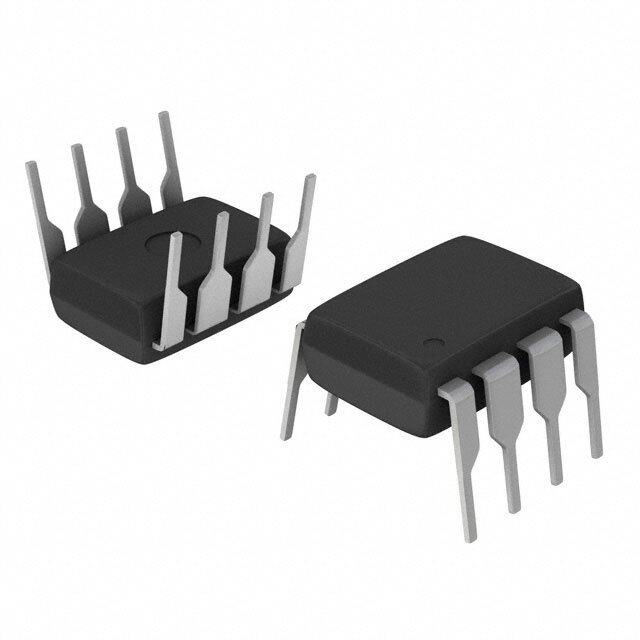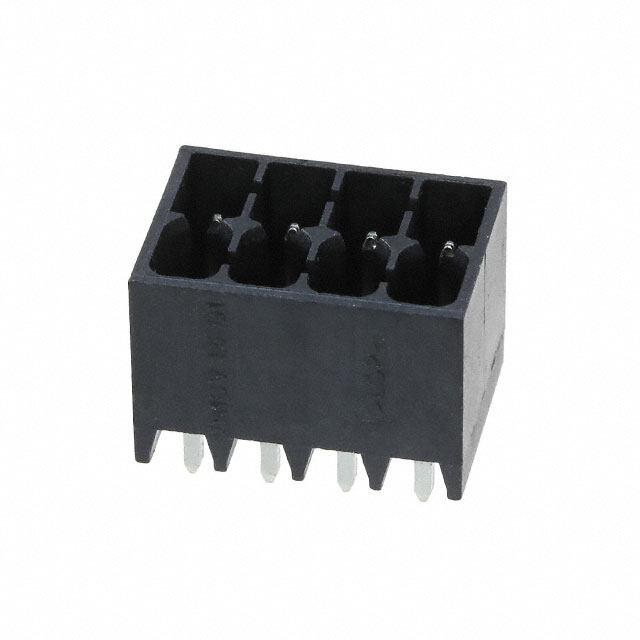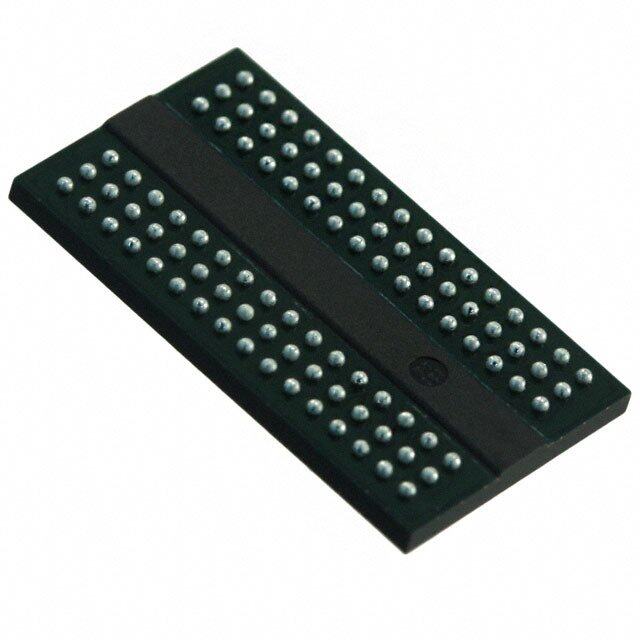ICGOO在线商城 > AC164129
- 型号: AC164129
- 制造商: Microchip
- 库位|库存: xxxx|xxxx
- 要求:
| 数量阶梯 | 香港交货 | 国内含税 |
| +xxxx | $xxxx | ¥xxxx |
查看当月历史价格
查看今年历史价格
AC164129产品简介:
ICGOO电子元器件商城为您提供AC164129由Microchip设计生产,在icgoo商城现货销售,并且可以通过原厂、代理商等渠道进行代购。 提供AC164129价格参考以及MicrochipAC164129封装/规格参数等产品信息。 你可以下载AC164129参考资料、Datasheet数据手册功能说明书, 资料中有AC164129详细功能的应用电路图电压和使用方法及教程。
| 参数 | 数值 |
| 产品目录 | 编程器,开发系统嵌入式解决方案 |
| 描述 | CARD DAUGHTER AUDIO PICTAIL PLUS子卡和OEM板 Audio PICtail Plus Daughter Board |
| 产品分类 | |
| 品牌 | Microchip Technology |
| 产品手册 | |
| 产品图片 |
|
| rohs | 符合RoHS无铅 / 符合限制有害物质指令(RoHS)规范要求 |
| 产品系列 | 嵌入式开发工具,嵌入式工具与配件,子卡和OEM板,Microchip Technology AC164129PICtail™ |
| 数据手册 | |
| 产品型号 | AC164129 |
| 主要属性 | 语音录制,通过 PWM 回放 |
| 主要用途 | 音频,语音录制/回放 |
| 产品 | Daughter Boards |
| 产品目录页面 | |
| 产品种类 | 子卡和OEM板 |
| 使用的IC/零件 | dsPIC33F,PIC24H,Explorer 16 板,PICtail Plus™ |
| 商标 | Microchip Technology |
| 嵌入式 | 是,MCU,16 位 |
| 工厂包装数量 | 1 |
| 所含物品 | 子板 |
| 描述/功能 | Audio PICtail plus daughter card- |
| 标准包装 | 1 |
| 核心 | dsPIC, PIC |
| 用于 | DM240001 |
| 辅助属性 | 可放大的麦克风和线路输入,耳机和线路输出 |
| 配用 | /product-detail/zh/5037000100/WM2582-ND/2323783 |

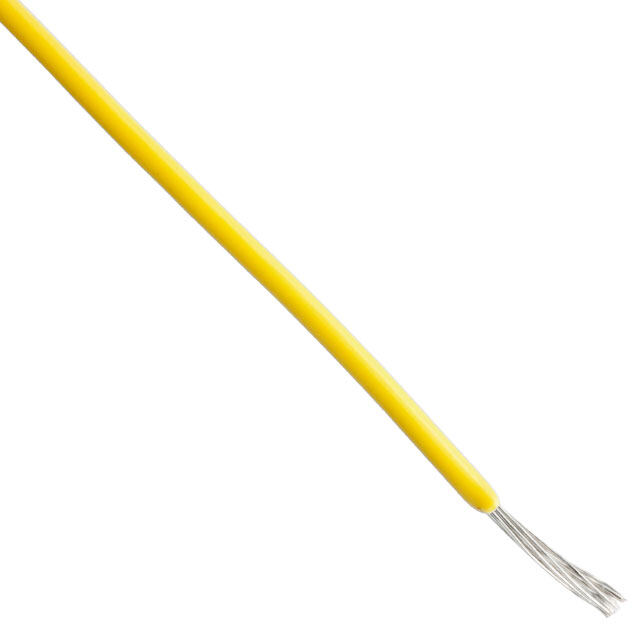
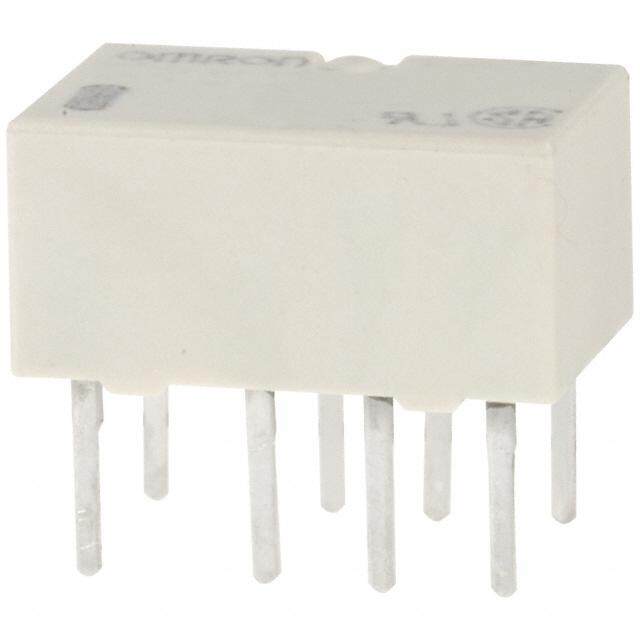

.jpg)
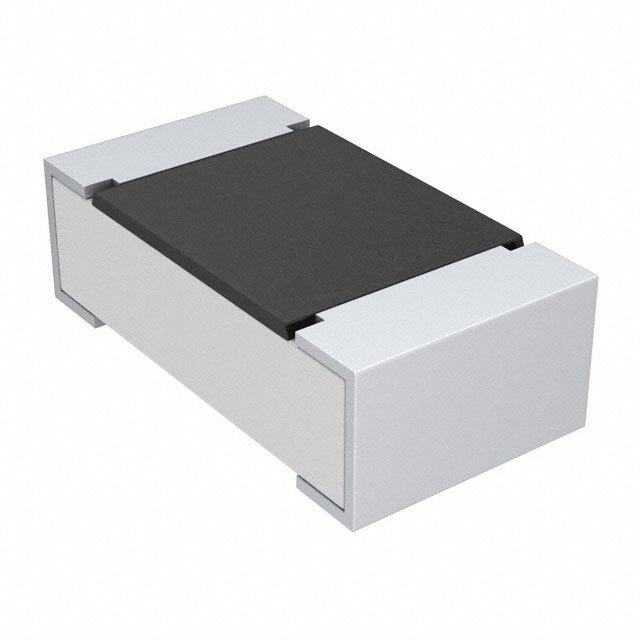
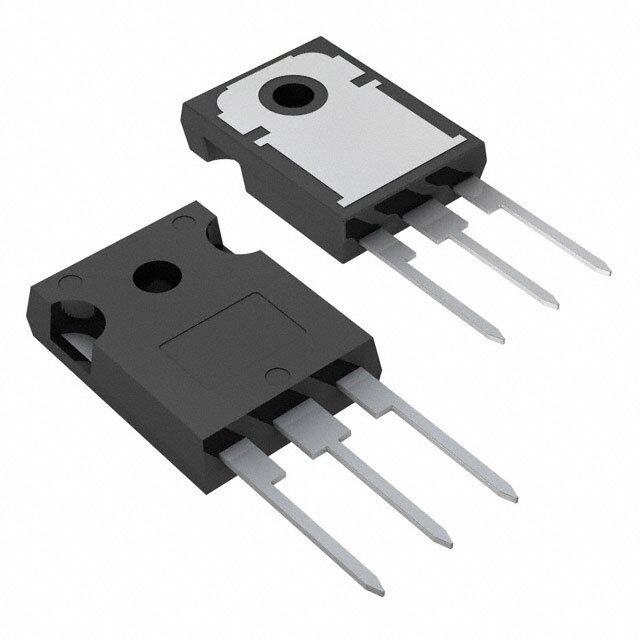

- 商务部:美国ITC正式对集成电路等产品启动337调查
- 曝三星4nm工艺存在良率问题 高通将骁龙8 Gen1或转产台积电
- 太阳诱电将投资9.5亿元在常州建新厂生产MLCC 预计2023年完工
- 英特尔发布欧洲新工厂建设计划 深化IDM 2.0 战略
- 台积电先进制程称霸业界 有大客户加持明年业绩稳了
- 达到5530亿美元!SIA预计今年全球半导体销售额将创下新高
- 英特尔拟将自动驾驶子公司Mobileye上市 估值或超500亿美元
- 三星加码芯片和SET,合并消费电子和移动部门,撤换高东真等 CEO
- 三星电子宣布重大人事变动 还合并消费电子和移动部门
- 海关总署:前11个月进口集成电路产品价值2.52万亿元 增长14.8%
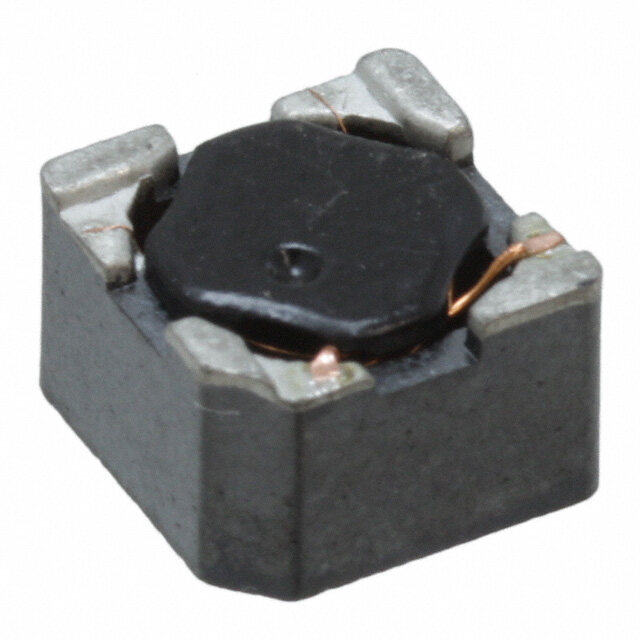
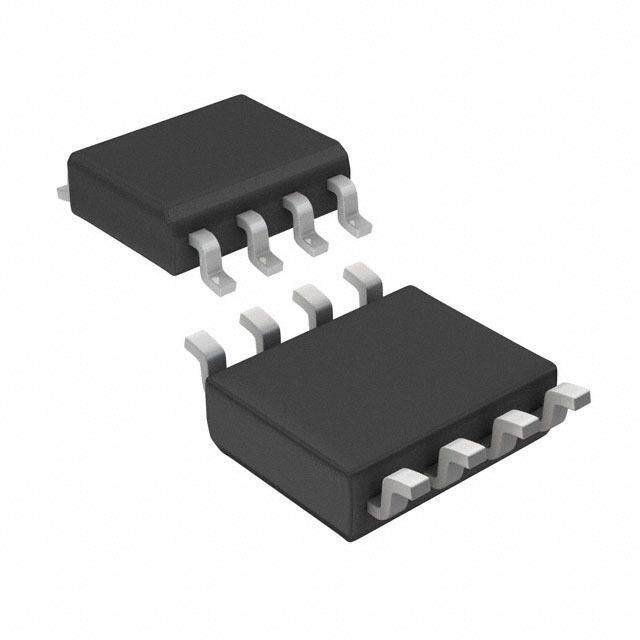

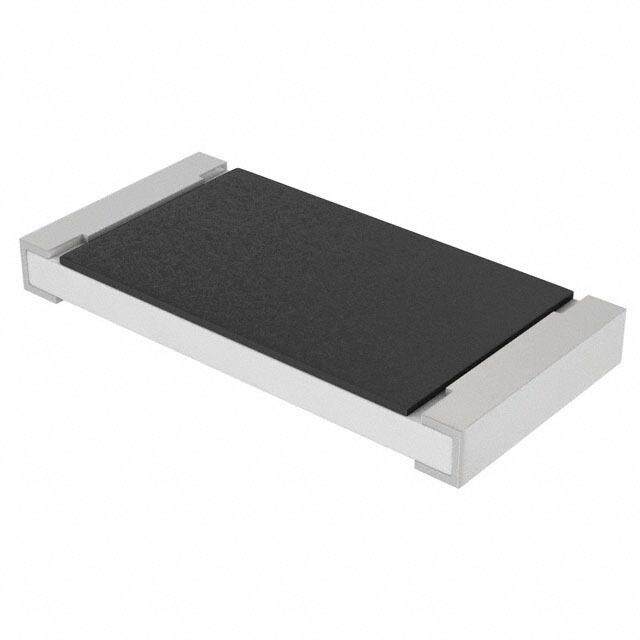
PDF Datasheet 数据手册内容提取
™ Audio PICtail Plus Daughter Board User’s Guide © 2007 Microchip Technology Inc. DS70297A
Note the following details of the code protection feature on Microchip devices: • Microchip products meet the specification contained in their particular Microchip Data Sheet. • Microchip believes that its family of products is one of the most secure families of its kind on the market today, when used in the intended manner and under normal conditions. • There are dishonest and possibly illegal methods used to breach the code protection feature. All of these methods, to our knowledge, require using the Microchip products in a manner outside the operating specifications contained in Microchip’s Data Sheets. Most likely, the person doing so is engaged in theft of intellectual property. • Microchip is willing to work with the customer who is concerned about the integrity of their code. • Neither Microchip nor any other semiconductor manufacturer can guarantee the security of their code. Code protection does not mean that we are guaranteeing the product as “unbreakable.” Code protection is constantly evolving. We at Microchip are committed to continuously improving the code protection features of our products. Attempts to break Microchip’s code protection feature may be a violation of the Digital Millennium Copyright Act. If such acts allow unauthorized access to your software or other copyrighted work, you may have a right to sue for relief under that Act. Information contained in this publication regarding device Trademarks applications and the like is provided only for your convenience The Microchip name and logo, the Microchip logo, Accuron, and may be superseded by updates. It is your responsibility to dsPIC, KEELOQ, KEELOQ logo, microID, MPLAB, PIC, ensure that your application meets with your specifications. PICmicro, PICSTART, PROMATE, rfPIC and SmartShunt are MICROCHIP MAKES NO REPRESENTATIONS OR registered trademarks of Microchip Technology Incorporated WARRANTIES OF ANY KIND WHETHER EXPRESS OR in the U.S.A. and other countries. IMPLIED, WRITTEN OR ORAL, STATUTORY OR OTHERWISE, RELATED TO THE INFORMATION, AmpLab, FilterLab, Linear Active Thermistor, Migratable INCLUDING BUT NOT LIMITED TO ITS CONDITION, Memory, MXDEV, MXLAB, SEEVAL, SmartSensor and The QUALITY, PERFORMANCE, MERCHANTABILITY OR Embedded Control Solutions Company are registered FITNESS FOR PURPOSE. Microchip disclaims all liability trademarks of Microchip Technology Incorporated in the arising from this information and its use. Use of Microchip U.S.A. devices in life support and/or safety applications is entirely at Analog-for-the-Digital Age, Application Maestro, CodeGuard, the buyer’s risk, and the buyer agrees to defend, indemnify and dsPICDEM, dsPICDEM.net, dsPICworks, dsSPEAK, ECAN, hold harmless Microchip from any and all damages, claims, ECONOMONITOR, FanSense, FlexROM, fuzzyLAB, suits, or expenses resulting from such use. No licenses are In-Circuit Serial Programming, ICSP, ICEPIC, Mindi, MiWi, conveyed, implicitly or otherwise, under any Microchip MPASM, MPLAB Certified logo, MPLIB, MPLINK, PICkit, intellectual property rights. PICDEM, PICDEM.net, PICLAB, PICtail, PowerCal, PowerInfo, PowerMate, PowerTool, REAL ICE, rfLAB, Select Mode, Smart Serial, SmartTel, Total Endurance, UNI/O, WiperLock and ZENA are trademarks of Microchip Technology Incorporated in the U.S.A. and other countries. SQTP is a service mark of Microchip Technology Incorporated in the U.S.A. All other trademarks mentioned herein are property of their respective companies. © 2007, Microchip Technology Incorporated, Printed in the U.S.A., All Rights Reserved. Printed on recycled paper. Microchip received ISO/TS-16949:2002 certification for its worldwide headquarters, design and wafer fabrication facilities in Chandler and Tempe, Arizona; Gresham, Oregon and design centers in California and India. The Company’s quality system processes and procedures are for its PIC® MCUs and dsPIC® DSCs, KEELOQ® code hopping devices, Serial EEPROMs, microperipherals, nonvolatile memory and analog products. In addition, Microchip’s quality system for the design and manufacture of development systems is ISO 9001:2000 certified. DS70297A-page ii © 2007 Microchip Technology Inc.
AUDIO PICtail™ PLUS DAUGHTER BOARD USER’S GUIDE Table of Contents Preface ...........................................................................................................................1 Chapter 1. Introduction 1.1 Overview ........................................................................................................7 1.2 Board Setup ...................................................................................................8 1.3 Reference Documents ....................................................................................9 Chapter 2. Hardware 2.1 Functional Overview ....................................................................................11 2.2 Hardware Components ................................................................................13 Chapter 3. PWM Speech Loopback Demo 3.1 Speech Loopback Demo ..............................................................................19 3.2 Running the Demo .......................................................................................22 Appendix A. Drawings and Schematics A.1 Audio PICtail Plus Daughter Board Layout ..................................................23 A.2 Schematic Diagrams ....................................................................................23 Index .............................................................................................................................29 Worldwide Sales and Service ....................................................................................30 © 2007 Microchip Technology Inc. DS70297A-page iii
Audio PICtail™ Plus Daughter Board User’s Guide NOTES: DS70297A-page iv © 2007 Microchip Technology Inc.
AUDIO PICtail™ PLUS DAUGHTER BOARD USER’S GUIDE Preface NOTICE TO CUSTOMERS All documentation becomes dated, and this manual is no exception. Microchip tools and documentation are constantly evolving to meet customer needs, so some actual dialogs and/or tool descriptions may differ from those in this document. Please refer to our web site (www.microchip.com) to obtain the latest documentation available. Documents are identified with a “DS” number. This number is located on the bottom of each page, in front of the page number. The numbering convention for the DS number is “DSXXXXXA”, where “XXXXX” is the document number and “A” is the revision level of the document. For the most up-to-date information on development tools, see the MPLAB® IDE online help. Select the Help menu, and then Topics to open a list of available online help files. INTRODUCTION This chapter contains general information that will be useful to know before you use the Audio PICtail™ Plus Daughter Board. Items discussed in this chapter include: • Document Layout • Conventions Used in this Guide • Warranty Registration • Recommended Reading • The Microchip Web Site • Development Systems Customer Change Notification Service • Customer Support • Document Revision History DOCUMENT LAYOUT This document describes how to use the Audio PICtail Plus Daughter Board as a development tool to emulate and debug firmware on a target board. The manual layout is as follows: • Chapter 1.Introduction – This chapter introduces the Audio PICtail Plus Daugh- ter Board and provides an overview of its features. • Chapter 2.Hardware – This chapter provides a functional overview of the Audio PICtail Plus Daughter Board and identifies the major hardware components. • Chapter 3.PWM Speech Loopback Demo – This chapter describes a simple loopback program that demonstrates how to use the Audio PICtail Plus Daughter Board for speech capture and playback without the use of a codec. • Appendix A.Drawings and Schematics – This appendix provides detailed technical drawings and schematic diagrams of the Audio PICtail Plus Daughter Board. © 2007 Microchip Technology Inc. DS70297A-page 1
Audio PICtail™ Plus Daughter Board User’s Guide CONVENTIONS USED IN THIS GUIDE This manual uses the following documentation conventions: DOCUMENTATION CONVENTIONS Description Represents Examples Arial font: Italic characters Referenced books MPLAB® IDE User’s Guide Emphasized text ...is the only compiler... Initial caps A window the Output window A dialog the Settings dialog A menu selection select Enable Programmer Quotes A field name in a window or “Save project before build” dialog Underlined, italic text with A menu path File>Save right angle bracket Bold characters A dialog button Click OK A tab Click the Power tab N‘Rnnnn A number in verilog format, 4‘b0010, 2‘hF1 where N is the total number of digits, R is the radix and n is a digit. Text in angle brackets < > A key on the keyboard Press <Enter>, <F1> Courier New font: Plain Courier New Sample source code #define START Filenames autoexec.bat File paths c:\mcc18\h Keywords _asm, _endasm, static Command-line options -Opa+, -Opa- Bit values 0, 1 Constants 0xFF, ‘A’ Italic Courier New A variable argument file.o, where file can be any valid filename Square brackets [ ] Optional arguments mcc18 [options] file [options] Curly brackets and pipe Choice of mutually exclusive errorlevel {0|1} character: { | } arguments; an OR selection Ellipses... Replaces repeated text var_name [, var_name...] Represents code supplied by void main (void) user { ... } DS70297A-page 2 © 2007 Microchip Technology Inc.
Preface WARRANTY REGISTRATION Please complete the enclosed Warranty Registration Card and mail it promptly. Sending in the Warranty Registration Card entitles you to receive new product updates. Interim software releases are available at the Microchip web site. RECOMMENDED READING This user's guide describes how to use Audio PICtail Plus Daughter Board. Other useful documents are listed below. The following Microchip documents are available and recommended as supplemental reference resources. Readme Files For the latest information on using other tools, read the tool-specific Readme files in the Readmes subdirectory of the MPLAB® IDE installation directory. The Readme files contain update information and known issues that may not be included in this user’s guide. PIC24H Family Overview (DS70166) This document provides an overview of the functionality of the new PIC24H product family. It helps to determine how the PIC24H high-performance, 16-bit microcontrollers fit a specific product application. PIC24H Family Reference Manual (www.microchip.com) Refer to this document for detailed information on PIC24H device operation. This reference manual explains the operation of the PIC24H family architecture and peripheral modules, but does not cover the specifics of each device. Refer also to the appropriate device data sheet for device-specific information and specifications. dsPIC33F Family Reference Manual (www.microchip.com) Refer to this document for detailed information on dsPIC33F device operation. This reference manual explains the operation of the dsPIC33F Digital Signal Controller (DSC) family architecture and peripheral modules, but does not cover the specifics of each device. Refer also to the appropriate device data sheet for device-specific information and specifications. dsPIC33F Family Datasheet (DS70165) This document provides an overview of the functionality of the dsPIC33F DSC product family. It includes device-specific information such as pinout diagrams, register maps, electrical specifications and packaging, in addition to an overview of the CPU and peripheral features. dsPIC30F/33F Programmer’s Reference Manual (DS70157) This manual is a software developer’s reference for the dsPIC30F and dsPIC33F 16-bit DSC devices. This manual describes the instruction set in detail and also provides general information to assist in developing software for the dsPIC30F/33F DSC family. © 2007 Microchip Technology Inc. DS70297A-page 3
Audio PICtail™ Plus Daughter Board User’s Guide MPLAB® ASM30, MPLAB® LINK30 and Utilities User’s Guide (DS51317) This document helps you use Microchip Technology’s language tools for dsPIC33F DSC and PIC24H MCU devices based on GNU technology. The language tools discussed are: • MPLAB ASM30 Assembler • MPLAB LINK30 Linker • MPLAB LIB30 Archiver/Librarian • Other Utilities MPLAB® C30 C Compiler User’s Guide and Libraries (DS51284) This document helps you use Microchip’s MPLAB C30 C compiler to develop your application. MPLAB C30 is a GNU-based language tool, based on source code from the Free Software Foundation (FSF). For more information about FSF, see www.fsf.org. MPLAB® REAL ICE™ In-Circuit Emulator User’s Guide (DS51616) This document describes how to use the MPLAB REAL ICE in-circuit emulator as a development tool to emulate and debug firmware on a target board, as well as how to program devices. THE MICROCHIP WEB SITE Microchip provides online support via our web site at www.microchip.com. This web site is used as a means to make files and information easily available to customers. Accessible by using your favorite Internet browser, the web site contains the following information: • Product Support – Data sheets and errata, application notes and sample programs, design resources, user’s guides and hardware support documents, latest software releases and archived software • General Technical Support – Frequently Asked Questions (FAQs), technical support requests, online discussion groups, Microchip consultant program member listing • Business of Microchip – Product selector and ordering guides, latest Microchip press releases, listing of seminars and events, listings of Microchip sales offices, distributors and factory representatives DS70297A-page 4 © 2007 Microchip Technology Inc.
Preface DEVELOPMENT SYSTEMS CUSTOMER CHANGE NOTIFICATION SERVICE Microchip’s customer notification service helps keep customers current on Microchip products. Subscribers will receive e-mail notification whenever there are changes, updates, revisions or errata related to a specified product family or development tool of interest. To register, access the Microchip web site at www.microchip.com, click on Customer Change Notification and follow the registration instructions. The Development Systems product group categories are: • Compilers – The latest information on Microchip C compilers and other language tools. These include the MPLAB C18 and MPLAB C30 C compilers; MPASM™ and MPLAB ASM30 assemblers; MPLINK™ and MPLAB LINK30 object linkers; and MPLIB™ and MPLAB LIB30 object librarians. • Emulators – The latest information on Microchip in-circuit emulators. This includes the MPLAB ICE 2000 and MPLAB ICE 4000. • In-Circuit Debuggers – The latest information on the Microchip in-circuit debugger, MPLAB ICD 2. • MPLAB® IDE – The latest information on Microchip MPLAB IDE, the Windows® Integrated Development Environment for development systems tools. This list is focused on the MPLAB IDE, MPLAB SIM simulator, MPLAB IDE Project Manager and general editing and debugging features. • Programmers – The latest information on Microchip programmers. These include the MPLAB PM3 and PRO MATE® II device programmers and the PICSTART® Plus and PICkit™ 1 development programmers. CUSTOMER SUPPORT Users of Microchip products can receive assistance through several channels: • Distributor or Representative • Local Sales Office • Field Application Engineer (FAE) • Technical Support Customers should contact their distributor, representative or field application engineer (FAE) for support. Local sales offices are also available to help customers. A listing of sales offices and locations is included in the back of this document. Technical support is available through the web site at: http://support.microchip.com © 2007 Microchip Technology Inc. DS70297A-page 5
Audio PICtail™ Plus Daughter Board User’s Guide DOCUMENT REVISION HISTORY Revision A (October 2007) • Initial Release of this Document. DS70297A-page 6 © 2007 Microchip Technology Inc.
AUDIO PICtail™ PLUS DAUGHTER BOARD USER’S GUIDE Chapter 1. Introduction Thank you for purchasing Microchip Technology’s Audio PICtail Plus Daughter Board. This board provides a low-cost interface for speech sampling and playback. The Audio PICtail Plus Daughter Board is used with the Explorer 16 Development Board to demonstrate an effective software technique for processing acceptable voice quality audio without the use of a codec device. This chapter introduces the Audio PICtail Plus Daughter Board and provides an overview of its features. Topics covered include: • Overview • Board Setup • Reference Documents 1.1 OVERVIEW The Audio PICtail Plus Daughter Board fits into the expansion slot on the Explorer 16 board and interfaces between an external audio device and the dsPIC33F or PIC24H device on the Explorer 16 board. Audio input signals are routed to the Analog-to-Digital Converter (ADC) module on the dsPIC33F or PIC24H device for software processing. Output signals can be generated by the dsPIC33F or PIC24H on the Output Compare PWM module as a pulse-width modulated digital waveform. On some dsPIC33F devices the output can be generated by the Digital-to-Analog Conversion module as a pair of differential signals. A PWM output signal is converted to an analog signal by a low-pass filter on the Audio PICtail Plus Daughter Board. A Digital-to-Analog Converter (DAC) signal pair is converted to a single-ended analog signal by a differential amplifier on the Audio PICtail Plus Daughter Board. The output signals from the Audio PICtail Plus Daughter Board are then appropriately amplified for the selected output type (line or speaker). The Explorer 16 board supplies power to the Audio PICtail Plus Daughter Board. The Audio PICtail Plus Daughter Board is shown in Figure1-1. © 2007 Microchip Technology Inc. DS70297A-page 7
Audio PICtail™ Plus Daughter Board User’s Guide FIGURE 1-1: AUDIO PICtail™ PLUS DAUGHTER BOARD 1.2 BOARD SETUP Figure1-2 is a photograph of Audio PICtail Plus Daughter Board plugged into Explorer16 Development Board. A microphone and speaker are connected to the Audio PICtail Plus Daughter Board. The power supply and MPLAB ICD 2 are plugged into the Explorer 16 board. When the included demonstration software is loaded into the dsPIC33F or PIC24H device, the voice input to the microphone is looped back to the speakers, demonstrating voice-quality audio without the use of a codec device. FIGURE 1-2: AUDIO PICtail™ PLUS DAUGHTER BOARD SETUP DS70297A-page 8 © 2007 Microchip Technology Inc.
Introduction 1.3 REFERENCE DOCUMENTS In addition to the Recommended Reading listed in the Preface, the following manufacturers’ data sheets are also recommended as reference sources: • National Semiconductor Corporation Data Sheet, LM4811 Boomer® Audio Power Amplifier Series Dual 105 mW Headphone Amplifier with Digital Volume Control and Shutdown Mode (DS200061) • Wolfson Microelectronics Data Sheet, WM8510 Mono CODEC with Speaker Driver, Production Data December 2006, Rev. 4.1 • Atmel Corporation Data Sheet, AT25F4096 4-Mbit High Speed SPI Serial Flash Memory (24546–SFLSH–05/06) © 2007 Microchip Technology Inc. DS70297A-page 9
Audio PICtail™ Plus Daughter Board User’s Guide NOTES: DS70297A-page 10 © 2007 Microchip Technology Inc.
AUDIO PICtail™ PLUS DAUGHTER BOARD USER’S GUIDE Chapter 2. Hardware This chapter provides a functional overview of the Audio PICtail Plus Daughter Board and identifies the major hardware components. Topics covered include: • Functional Overview • Hardware Components 2.1 FUNCTIONAL OVERVIEW The block diagram shown in Figure2-1 illustrates the mainstream operation of the Audio PICtail Plus Daughter Board. FIGURE 2-1: AUDIO PICtail™ PLUS DAUGHTER BOARD BLOCK DIAGRAM LINE/MIC ADC CHANNEL SELECT LINE/MICROPHONE SELECT MICROPHONE J8 AMPLIFIER ANTI- J5 AN0 ALIASING LINE INPUT 3 dB to 23 dB LOW-PASS AN3 FILTER MIC ADJ LINE ADJ OUTPUT FILTER INPUT LINE OUTPUT SELECT SELECT AMPLIFIER J4 J7 LINE OUTPUT LOW- OC1 Explorer 16 PASS Development -1 dB to 10 dB FILTER OC2 Board Connector DCI HEADPHONE AMPLIFIER CODEC HEADPHONES CLK DAC DIFFERENTIAL I2C -33 dB to 12 dB AMPLIFIER VOL UP/DN DAC+ DAC- 0 dB 4-Mbit FLASH SPI MEMORY 2.1.1 Speech Sampling The incoming audio signal can come from a line input or a condenser microphone. The speech sampling input is jumper selected (J8). The selected signal is amplified by a non-inverting AC amplifier (Line/Microphone Amplifier) and routed to the ADC module on the dsPIC33F or PIC24H device through an anti-aliasing filter. This second-order Sallen-Key low-pass filter has a cutoff frequency of 3300 Hz. The ADC Channel Select Jumper (J5) selects the input signal line (AN0 or AN3). If the input to the amplifier is a condenser microphone, a bias voltage provides a working supply voltage for the microphone. The line input does not require this bias voltage. The amplifier has a variable gain from 3 dB to 23 dB, which can be adjusted to control microphone sensitivity or boost a low line-input signal. The output of the amplifier is biased at 1.65V. © 2007 Microchip Technology Inc. DS70297A-page 11
Audio PICtail™ Plus Daughter Board User’s Guide 2.1.2 Speech Playback The mainstream speech playback interface processes the pulse-width modulated digital signal from the Output Compare PWM module of the dsPIC33F or PIC24H device. A low-pass filter demodulates the PWM signal as shown in Figure2-2. The low-pass filter behaves like an integrator whose output signal amplitude depends on the duty cycle of the input PWM waveform. The PWM frequency should be an integral multiple of the audio sampling rate. FIGURE 2-2: PWM DEMODULATION PWM SIGNAL FROM OCPWM LOW-PASS FILTER DEMODULATED AUDIO SIGNAL R C The output of the low-pass filter feeds both the Line Output and Headphone amplifiers (through Output Select Jumper J4). The Line Output amplifier drives external audio recording equipment or an external audio power amplifier. The amplifier is an AC inverting amplifier with adjustable gain. The gain can be adjusted to match the input level requirements of the external audio equipment, and can be varied from -1 dB to 10dB. The headphone amplifier drives an audio headphone. This amplifier can drive up to 75mW into a 32 ohm headphone. The amplifier uses a digital volume control that is controlled by the clock switch and the control switch. Volume is increased by pressing and releasing the clock switch while holding the control switch down. Volume is decreased by pressing and releasing the clock switch without operating the control switch. 2.1.3 Codec The optional codec is supported by dsPIC33F devices only. The input is fixed to the amplified incoming signal from the Line/Microphone amplifier. The output feeds both the Line Output and Headphone amplifiers (through Output Select Jumper J4). The codec must interact with the application program running on the dsPIC33F. Commands from the application program control the codec operating parameters (such as communication protocol, sampling rate, volume control, level control, filter settings, etc.). Command information is exchanged over the Inter-Integrated Circuit™ (I2C) module on the dsPIC33F. The codec converts the incoming audio signal to a digital signal for the Digital Converter Interface (DCI) module of the dsPIC33F. Audio output from the application program is sent to the codec via the DCI module. The codec converts this digital signal to audio for the Line Output and Headphone amplifiers. 2.1.4 DAC Differential Amplifier The DAC Differential Amplifier allows theAudio PICtail Plus Daughter Board to interface with the DAC module on dsPIC33F devices. Audio output from the DAC module is a pair of differential analog signals. The DAC Differential amplifier converts this complementary signal pair into a single-ended audio signal for the Microphone and Line Output amplifiers. The DAC Differential amplifier provides 0dB gain. DS70297A-page 12 © 2007 Microchip Technology Inc.
H a r d w a r e 2.1.5 4-Mb Serial Flash Memory The Audio PICtail Plus Daughter Board includes 4-Mb serial Flash memory that can be used for storing data. The memory interfaces with the SPI bus on dsPIC33F and PIC24H devices and might typically be used by applications that require storage of speech samples for playback purposes. 2.2 HARDWARE COMPONENTS Figure2-3 identifies the key Audio PICtail Plus Daughter Board hardware components. FIGURE 2-3: AUDIO PICtail™ PLUS DAUGHTER BOARD 1 2 3 4 5 6 7 8 22 21 20 9 10 19 18 17 16 15 14 13 12 11 Ref Component Ref Component 1 Flash Memory Write-Protect Jumper (J6) 12 Microphone Gain Control (R29) 2 Flash Memory (U1) 13 Line/Microphone Input Select Jumper (J8) 3 ADC Channel Select Jumper (J5) 14 Headphone Output Jack (J10) 4 Line/Microphone Input Phone Jack (J1) 15 Line Output Jack (J9) 5 Output Select Jumper (J4) 16 Headphone Amplifier Digital Volume Control (S2) 6 PWM Low-Pass Filter (U3:A,B) 17 Headphone Amplifier Digital Volume Control (S1) 7 DAC Differential Amplifier (U3:C) 18 Headphone Amplifier (U5) 8 28-Pin Starter Development Board Connector (J3) 19 Codec Oscillator (Y1) 9 Line Output Amplifier (U4:B) 20 Explorer 16 PICtail Connector (J2) 10 Filter Input Select Jumper (J7) 21 Codec (U2) 11 Line Output Gain Control Potentiometer (R24) 22 Anti-Aliasing Low-Pass Filter (U4:C) © 2007 Microchip Technology Inc. DS70297A-page 13
Audio PICtail™ Plus Daughter Board User’s Guide 2.2.1 Line/Microphone Input Phone Jack (J1) The Line/Microphone Input (Ref 4) is a 3.5 mm mono input phone jack (MJ3502). This connection accepts either a condenser microphone or a line level signal (see schematic in FigureA-2). 2.2.2 Line/Microphone Input Select Jumper (J8) The Line/Microphone Input Select Jumper (Ref 13) determines if the Microphone/Line Pre-Amplifier (U4:A) operates as a line amplifier or a microphone amplifier. If the MIC option is selected, a bias voltage of +5V is applied to the Line/Microphone Input Phone Jack (J1), as shown in the schematic in FigureA-2. 2.2.3 Line/Microphone Pre-Amplifier (U4:A) The Microphone/Line Pre-Amplifier (Ref 9) is implemented using one of the four opamps on the MCP6024 quad op amp IC (U4). The output of this non-inverting AC amplifier is biased at 1.65V. The gain of the amplifier is controlled by Potentiometer R29, as given by Equation2-1. EQUATION 2-1: INPUT PRE-AMPLIFIER GAIN Gain = 1+⎛(---R----2---9-----+-----R----1---7---)-⎞ ⎝ R3 ⎠ See FigureA-2 for the complete schematic of the Line/Microphone Pre-Amplifier. 2.2.4 Anti-Aliasing Low-Pass Filter (U4:C) The Anti-Aliasing Low-Pass Filter uses one of the four operational amplifiers on the MCP6024 quad op amp IC (U4). The output of the Line/Microphone Pre-Amplifier (Ref22) uses an anti-aliasing low-pass second-order Sallen-Key structure to filter the signal and provide a cut-off frequency of 3300 Hz. See FigureA-3 for a schematic of the Anti-Aliasing Low-Pass Filter. 2.2.5 Microphone Gain Control (R29) MIC ADJ Potentiometer R29 (Ref 12) controls the gain of the Line/Microphone Pre-Amplifier (U4:A). Note: Setting the gain too high can cause the output of the amplifier to saturate and clip. See FigureA-2 for the complete schematic of the Line/Microphone Pre-Amplifier. 2.2.6 ADC Channel Select Jumper (J5) The ADC Channel Select Jumper (Ref 3) is used to select the analog-to-digital input channel (AN0 or AN3) on the dsPIC33F or PIC24H device on the Explorer 16 Development Board. To use channel AN0, place the jumper between pins 2 and 3 on the ADC CH SEL header (see FigureA-2). To use channel AN3, place the jumper between pins 1 and 2. DS70297A-page 14 © 2007 Microchip Technology Inc.
Hardware 2.2.7 PWM Low-Pass Filter (U3:A,B) The PWM signal from the Output Compare PWM module on the dsPIC33F or PIC24H device on the Explorer 16 board is demodulated by the PWM low-pass filter (Ref 6). This fourth order filter uses two of the four op amps (U3:A and U3:B) on the MCP6024 quad op amp IC. The input to the filter is selected by the Filter Input Select Jumper (J7). The output of the filter is routed to the headphone and line output amplifiers via the Output Select Jumper (J4). The complete schematic of the low-pass filter, the input select jumper and the output select jumper is shown in FigureA-4. 2.2.8 Filter Input Select Jumper (J7) The input to the PWM Low-Pass Filter is selected by the FLT I/P SEL Jumper (Ref 10). This jumper allows the following inputs to be selected: • OCPWM channel 1 output (OC1) of the dsPIC33F or PIC24H device on the Explorer 16 board • OCPWM channel 2 output (OC2) of the dsPIC33F or PIC24H device on the Explorer 16 board • Output of the Line/Microphone Pre-Amplifier (MIC_SIG) 2.2.9 Output Select Jumper (J4) The Output Select Jumper (Ref 5) determines whether the input signal for the Line Output and Headphone Amplifiers comes from the PWM Filter, the codec or the differential amplifier that converts a digital audio signal from the dsPIC33F device. See FigureA-4 for circuit details. 2.2.10 Line Output Amplifier (U4:B) The Line Output Amplifier is implemented using one of the four op amps on the MCP6024 quad op amp IC (Ref 9). The output of this inverting AC amplifier is intended to drive an external audio amplifier or recording device. The signal is AC-coupled to the Line Output Jack (J9). The gain of the amplifier is controlled by the Line Adjust Potentiometer (R24), as given by Equation2-2. EQUATION 2-2: LINE OUTPUT AMPLIFIER GAIN (R24+R19) Gain = ------------------------------- R21 See FigureA-4 for a complete schematic of the Line Output Amplifier. 2.2.11 Line Output Gain Control Potentiometer (R24) LINE ADJ potentiometer R24 (Ref 11) controls the gain of the Line Output Amplifier (U4:B). Note: Setting the gain too high can cause the output of the amplifier to saturate and clip. See FigureA-4 for a complete schematic of the Line Output Amplifier. © 2007 Microchip Technology Inc. DS70297A-page 15
Audio PICtail™ Plus Daughter Board User’s Guide 2.2.12 Line Output Jack (J9) Line out jack J9 (Ref 15) is a 3.5 mm stereo socket that can be used to connect the output of the line output amplifier to an external power amplifier or recording equipment. See FigureA-4 for a complete schematic of the Line Output Amplifier. 2.2.13 Headphone Amplifier (U5) The Headphone Amplifier (Ref 18) is a National Semiconductor LM4811 70 mW stereo amplifier with digital volume control. The input to the amplifier is controlled by the setting of Output Select Jumper (J4). The output of the amplifier is available at Headphone Output Jack (J10). Gain is controlled by the voltage levels applied through the CLK switch (S1) and VOL UP/DN switch (S2). Each time the CLK switch is pressed, the gain increases or decreases by 3 dB, depending on the status of the VOL UP/DN switch. If both switches are pressed, the gain increases on the leading edge of the CLK signal. If only the CLK switch is pressed, the gain decreases on the leading edge of the CLK signal. The gain can be adjusted over a range of +12 dB to -33 dB in 16 discrete gain settings. See FigureA-4 for a complete schematic of the Headphone Amplifier. 2.2.14 Headphone Amplifier Digital Volume Control Volume is increased by pressing and releasing the CLK switch (Ref 17) while holding down the VOL UP/DN switch (Ref 16). Volume is decreased by pressing and releasing the CLK switch without operating the VOL UP/DN switch. See FigureA-4 for a complete schematic of the Headphone Amplifier. 2.2.15 Headphone Output Jack (J10) The Headphone Jack (Ref 14) is a 3.5 mm stereo connector. A 32 ohm headphone can be connected to this socket. See FigureA-4 for a complete schematic of the Headphone Amplifier. 2.2.16 DAC Differential Amplifier (U3:C) The DAC Differential Amplifier (Ref 7) allows the Audio PICtail Plus Daughter Board to interface with the Digital-to-Analog Converter module on dsPIC33F devices. Audio output from the DAC module is a pair of buffered differential analog signals. The DAC Differential amplifier converts this complementary signal pair into a single-ended audio signal for the Microphone and Line Output amplifiers. This amplifier uses one of the four op amps (U3:C) on the MCP6024 quad op amp IC (Ref 7). The DAC Differential Amplifier provides 0 dB gain. See FigureA-4 for a complete schematic of the DAC Differential Amplifier. 2.2.17 Codec (U2) The Audio PICtail Plus Daughter Board includes an optional codec (Ref 21) that interfaces to the DCI module (data interface) and I2C bus (control interface) of the dsPIC33F device on the Explorer 16 board. It is also AC coupled to the output of the Line/Microphone Amplifier (MIC_SIG). The codec is a Wolfson WM8510 and uses oscillator Y1 for clocking. See FigureA-5 for a complete schematic of the Codec. DS70297A-page 16 © 2007 Microchip Technology Inc.
Hardware 2.2.18 Codec Oscillator (Y1) Codec Oscillator Y1 (Ref 19) provides a required 12 MHz master clock signal to the 16-bit Codec(U2). See FigureA-5 for a complete schematic of the Codec. 2.2.19 Flash Memory (U1) The Audio PICtail Plus Daughter Board includes a serial Flash memory chip (Ref 2). This memory is write protected when the jumper pin is inserted in WP (Jumper J6). See FigureA-6 for a complete schematic of the Flash memory circuit. 2.2.20 Flash Memory Write-Protect Jumper (J6) When the jumper pin is inserted in WP (Ref 1), write operations to the serial Flash memory have no effect. 2.2.21 Explorer 16 PICtail Connector (J2) The Audio PICtail Plus Daughter Board connects to the Explorer 16 board using edge connector J3 (Ref 20). The Audio PICtail Plus Daughter Board uses these Explorer 16 signals: • +3.3V power • +5V power • Ground • dsPIC33F device DCI module signals • dsPIC33F or PIC24H Output Compare module signals • dsPIC33F or PIC24H SPI 2 module signals • dsPIC33For PIC24H I2C 2 module signals • dsPIC33F or PIC24H ADC module inputs 2.2.22 28-Pin Starter Development Board Connector (J3) The 28-Pin Starter Development Board Connector (Ref 8) allows the Audio PICtail Plus Daughter Board to be connected to Microchip's 28-Pin Starter Development Board. CAUTION To avoid damage to the Audio PICtail Plus Daughter Board, the 28-Pin Starter Development Board must operate a +3.3V when it is connected to the Audio PICtail Plus Daughter Board. © 2007 Microchip Technology Inc. DS70297A-page 17
Audio PICtail™ Plus Daughter Board User’s Guide NOTES: DS70297A-page 18 © 2007 Microchip Technology Inc.
AUDIO PICtail™ PLUS DAUGHTER BOARD USER’S GUIDE Chapter 3. PWM Speech Loopback Demo This chapter describes a simple program that demonstrates how to use the Audio PICtail Plus Daughter Board for speech capture and loopback without the use of a codec. Topics covered include: • Speech Loopback Demo • Running the Demo 3.1 SPEECH LOOPBACK DEMO The CD that accompanies the Audio PICtail Plus Daughter Board contains a Speech Loopback Demo application. As shown in Figure3-1, this sample application uses the Audio PICtail Plus Daughter Board to capture an input microphone signal and deliver the captured signal to the dsPIC33F device on the Explorer 16 board for audio processing. The application program running on the dsPIC33F or PIC24H then: • Compresses the incoming digital signal from 16 bits to 8 bits using the G.711 µ-law encoding algorithm • Decompresses the 8-bit signal back to 16 bits using the G.711 µ-law decoding algorithm • Outputs the decompressed signal to the OC PWM module, where it is converted to a Pulse-Width Modulated signal. FIGURE 3-1: SPEECH LOOPBACK DEMO OVERVIEW EXPLORER 16 DEVELOPMENT BOARD G.711 SPEECH INPUT 12-BIT µ-LAW CAPTURE ADC ENCODE AUDIO PICtail™ PLUS dsPIC33F DAUGHTER BOARD OR PIC24H G.711 SPEECH OUTPUT OC µ-LAW PROCESSING PWM DECODE The Audio PICtail Plus Daughter Board then processes the PWM signal through the PWM filter to produce an analog audio signal. This signal is amplified and output through the speaker. As a result, audio spoken into the microphone is digitally processed without the use of a codec device and played back through the speaker. © 2007 Microchip Technology Inc. DS70297A-page 19
Audio PICtail™ Plus Daughter Board User’s Guide The demo program consists of these basic software elements: • ADC Driver • Output Compare Module Driver • Loopback Application Software 3.1.1 ADC Driver The ADC driver reads the incoming signal on the specified 12-bit ADC channel (either AN0 or AN3), as determined by the ADC CH SEL jumper (J9). The driver interface is specified in the file ADCChannelDrv.h. The driver is implemented in ADCChannelDrv.c file. The ADC driver uses DMA Channel 0 to read data from the ADC register. The DMA channel is configured for continuous ping-pong operation, which allows the application to read one buffer while the DMA is populating the other buffer. Buffer memory must be allocated by the user application. Parameters such as instruction cycle frequency, sampling rate, buffer size and ADC module configuration are set in the ADCChannelDrv.h header file. Refer to the driver documentation on the CD for details. 3.1.2 Output Compare Module Driver The Output Compare PWM (OCPWM) Driver uses the Output Compare module to convert digital data to a PWM signal. Either Output Compare Channel 1 or Channel 2 can be used. The driver interface is specified in the file OCPWMDrv.h and the driver is implemented in OCPWMDrv.c file. The driver uses DMA Channel 1 to write data to the OCxRS register in the Output Compare PWM module. This channel is configured for continuous ping-pong operation. The buffers for the driver must be allocated by the user application. The Timer 2 module on the dsPIC33F or PIC24H device is configured for the maximum PWM time period. The driver maps the input sample value to a time period, which is then loaded into the OCxRS register. The OC output stays high until the Timer 2 value matches the OCxRS register time period and then stays low for the rest of the PWM period. This way the duty cycle of the OC PWM signal is proportional to the input digital sample. Parameters such as instruction cycle frequency, sampling rate, buffer size and PWM carrier frequency are set in the OCPWMDrv.h header file. Refer to the driver documentation on the CD for details. DS70297A-page 20 © 2007 Microchip Technology Inc.
PWM Speech Loopback Demo 3.1.3 Loopback Application Software The Loopback application on the accompanying CD uses the ADC and OCPWM drivers to read and output speech signals with the Audio PICtail Plus board. The application will loopback the microphone signal to the headphone output after performing a G.711 encode/decode operation on the microphone signal. Figure3-2 is a flow chart of the demo application. FIGURE 3-2: APPLICATION FLOW CHART START Initialize ADC Driver Initialize OCPWM Driver Start ADC Start OCPWM No Input Frame Available ? Yes G.711 µ-Law Encode G.711 µ-Law Decode Yes OCPWM Driver Busy ? No Write Frame to OCPWM Driver © 2007 Microchip Technology Inc. DS70297A-page 21
Audio PICtail™ Plus Daughter Board User’s Guide 3.2 RUNNING THE DEMO To run the demo, follow these basic steps: 1. Copy the demo programs from the Audio PICtail Plus Daughter Board CD to your MPLAB project folder. 2. With the Audio PICtail Plus Daughter Board plugged into the Explorer 16 Development Board, set up the Explorer 16 board to run with MPLAB IDE (using either MPLAB ICE or REAL ICE). For detailed instructions on setting up the Explorer 16 Development Board, refer to the “Explorer 16 Development Board User’s Guide” (DS51589). 3. Open the demo program project in MPLAB IDE. 4. Build the application and program the dsPIC33F or PIC24H device. 5. Run the program. 6. Connect the microphone and speaker. 7. With the application running, speak into the microphone and note the resulting playback on the speaker. DS70297A-page 22 © 2007 Microchip Technology Inc.
AUDIO PICtail™ PLUS DAUGHTER BOARD USER’S GUIDE Appendix A. Drawings and Schematics This appendix provides detailed technical drawings and schematic diagrams of the Audio PICtail Plus Daughter Board. A.1 AUDIO PICtail PLUS DAUGHTER BOARD LAYOUT FigureA-1: Audio PICtail Plus Daughter Board Layout is a drawing of the Audio PICtail Plus Daughter Board layout. FIGURE A-1: AUDIO PICtail™ PLUS DAUGHTER BOARD LAYOUT A.2 SCHEMATIC DIAGRAMS The following schematic diagrams are included in this appendix: • FigureA-2: Speech Sampling Interface Schematic • FigureA-3: Anti-Aliasing Low-Pass Filter Schematic • FigureA-4: Speech Playback Interface Schematic • FigureA-5: Codec Schematic • FigureA-6: Flash Memory Schematic • FigureA-7: Board Connectors © 2007 Microchip Technology Inc. DS70297A-page 23
Audio PICtail™ Plus Daughter Board User’s Guide FIGURE A-2: SPEECH SAMPLING INTERFACE SCHEMATIC Line/Microphone Amplifier R29 C18 0.1 µF J8 U4:A J5 J1 MIC/SIG IN FIGURE A-3: ANTI-ALIASING LOW-PASS FILTER SCHEMATIC Anti-Aliasing Filter DS70297A-page 24 © 2007 Microchip Technology Inc.
Drawings and Schematics FIGURE A-4: SPEECH PLAYBACK INTERFACE SCHEMATIC PWM Low-Pass Filter FLT I/P SEL O/P SEL J4 Line Output Amplifier LINE OUT Headphone Amplifier HDPHONE CLK VOL UP/DN DAC Differential Amplifier © 2007 Microchip Technology Inc. DS70297A-page 25
Audio PICtail™ Plus Daughter Board User’s Guide FIGURE A-5: CODEC SCHEMATIC C8 C6 C13 C10 C9 4.7 µF 4.7 µF 4.7 µF 4.7 µF 4.7 µF U2 DE-COUPLING CAPACITORS 2.2K 2.2K FIGURE A-6: FLASH MEMORY SCHEMATIC U1 DE-COUPLING CAPACITOR J6 WP DS70297A-page 26 © 2007 Microchip Technology Inc.
Drawings and Schematics FIGURE A-7: BOARD CONNECTORS Note: The 28-pin board must operate at +3.3V when it is connected to the Audio PICtail™ Plus Daughter Board. © 2007 Microchip Technology Inc. DS70297A-page 27
Audio PICtail™ Plus Daughter Board User’s Guide NOTES: DS70297A-page 28 © 2007 Microchip Technology Inc.
AUDIO PICtail™ PLUS DAUGHTER BOARD USER’S GUIDE Index A R ADC Driver...............................................................20 Reading, Recommended...........................................3 B S Bias Voltage.............................................................11 Schematic Diagrams................................................23 Board Connectors Schematic..................................27 Single-Ended Signal...................................................7 Board Layout............................................................23 Speech Sampling Input............................................11 Speech Sampling Interface Schematic....................24 C W Codec.......................................................................12 Codec Schematic.....................................................26 Warranty Registration................................................3 Customer Notification Service....................................5 WWW Address...........................................................4 Customer Support......................................................5 D DAC Differential Amplifier........................................12 Demo Block Diagram...............................................19 Demo Flow Chart.....................................................21 Differential Signals.....................................................7 Digital Volume Control.............................................12 Documentation Conventions........................................................2 Layout.................................................................1 F Flash Memory..........................................................13 Flash Memory Schematic.........................................26 G G.711 µ-law Algorithm.............................................19 H Hardware Components............................................13 I Input Signal Line......................................................11 Internet Address.........................................................4 L Line Input.................................................................11 Line Output Amplifier...............................................12 M Manufacturers’ Data Sheets......................................9 Microchip Internet Web Site.......................................4 O OCPWM Driver........................................................20 P Ping-Pong Operation...............................................20 Playback..................................................................12 PWM Output Signal...................................................7 © 2007 Microchip Technology Inc. DS70297A-page 29
WORLDWIDE SALES AND SERVICE AMERICAS ASIA/PACIFIC ASIA/PACIFIC EUROPE Corporate Office Asia Pacific Office India - Bangalore Austria - Wels 2355 West Chandler Blvd. Suites 3707-14, 37th Floor Tel: 91-80-4182-8400 Tel: 43-7242-2244-39 Chandler, AZ 85224-6199 Tower 6, The Gateway Fax: 91-80-4182-8422 Fax: 43-7242-2244-393 Tel: 480-792-7200 Harbour City, Kowloon India - New Delhi Denmark - Copenhagen Fax: 480-792-7277 Hong Kong Tel: 91-11-4160-8631 Tel: 45-4450-2828 Technical Support: Tel: 852-2401-1200 Fax: 91-11-4160-8632 Fax: 45-4485-2829 http://support.microchip.com Web Address: Fax: 852-2401-3431 India - Pune France - Paris www.microchip.com Australia - Sydney Tel: 91-20-2566-1512 Tel: 33-1-69-53-63-20 Tel: 61-2-9868-6733 Fax: 33-1-69-30-90-79 Fax: 91-20-2566-1513 Atlanta Fax: 61-2-9868-6755 Germany - Munich Duluth, GA Japan - Yokohama China - Beijing Tel: 49-89-627-144-0 Tel: 678-957-9614 Tel: 81-45-471- 6166 Tel: 86-10-8528-2100 Fax: 49-89-627-144-44 Fax: 678-957-1455 Fax: 81-45-471-6122 Fax: 86-10-8528-2104 Italy - Milan Boston Korea - Daegu Westborough, MA China - Chengdu Tel: 82-53-744-4301 Tel: 39-0331-742611 Tel: 774-760-0087 Tel: 86-28-8665-5511 Fax: 82-53-744-4302 Fax: 39-0331-466781 Fax: 774-760-0088 Fax: 86-28-8665-7889 Korea - Seoul Netherlands - Drunen Chicago China - Fuzhou Tel: 82-2-554-7200 Tel: 31-416-690399 Itasca, IL Tel: 86-591-8750-3506 Fax: 82-2-558-5932 or Fax: 31-416-690340 Tel: 630-285-0071 Fax: 86-591-8750-3521 82-2-558-5934 Spain - Madrid Fax: 630-285-0075 China - Hong Kong SAR Malaysia - Kuala Lumpur Tel: 34-91-708-08-90 Dallas Tel: 852-2401-1200 Tel: 60-3-6201-9857 Fax: 34-91-708-08-91 Addison, TX Fax: 852-2401-3431 Fax: 60-3-6201-9859 UK - Wokingham Tel: 972-818-7423 China - Nanjing Malaysia - Penang Tel: 44-118-921-5869 Fax: 972-818-2924 Tel: 86-25-8473-2460 Tel: 60-4-227-8870 Fax: 44-118-921-5820 Detroit Fax: 86-25-8473-2470 Fax: 60-4-227-4068 Farmington Hills, MI China - Qingdao Philippines - Manila Tel: 248-538-2250 Tel: 86-532-8502-7355 Tel: 63-2-634-9065 Fax: 248-538-2260 Fax: 86-532-8502-7205 Fax: 63-2-634-9069 Kokomo China - Shanghai Singapore Kokomo, IN Tel: 86-21-5407-5533 Tel: 65-6334-8870 Tel: 765-864-8360 Fax: 86-21-5407-5066 Fax: 65-6334-8850 Fax: 765-864-8387 China - Shenyang Taiwan - Hsin Chu Los Angeles Tel: 86-24-2334-2829 Tel: 886-3-572-9526 Mission Viejo, CA Fax: 86-24-2334-2393 Fax: 886-3-572-6459 Tel: 949-462-9523 Fax: 949-462-9608 China - Shenzhen Taiwan - Kaohsiung Tel: 86-755-8203-2660 Tel: 886-7-536-4818 Santa Clara Fax: 86-755-8203-1760 Fax: 886-7-536-4803 Santa Clara, CA China - Shunde Taiwan - Taipei Tel: 408-961-6444 Tel: 86-757-2839-5507 Tel: 886-2-2500-6610 Fax: 408-961-6445 Fax: 86-757-2839-5571 Fax: 886-2-2508-0102 Toronto China - Wuhan Thailand - Bangkok Mississauga, Ontario, Tel: 86-27-5980-5300 Tel: 66-2-694-1351 Canada Fax: 86-27-5980-5118 Fax: 66-2-694-1350 Tel: 905-673-0699 Fax: 905-673-6509 China - Xian Tel: 86-29-8833-7252 Fax: 86-29-8833-7256 10/05/07 DS70297A-page 30 © 2007 Microchip Technology Inc.

 Datasheet下载
Datasheet下载

